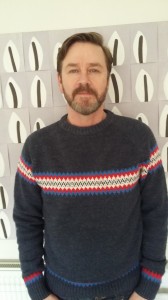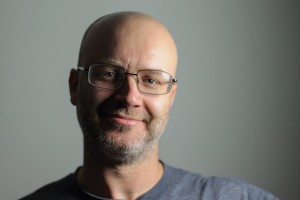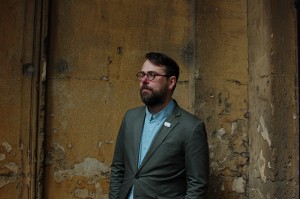Goodbye Wittgenstein Teil 2
Di, 1. November – Fr, 9. Dezember 2016 ///
Linz ///
Bei GOODBYE WITTGENSTEIN handelt es sich um ein internationales Austauschprogramm zwischen Künstler*innen und Wissenschaftler*innen von qujOchÖ (Linz) und A3 Project Space (Birmingham), das in Kooperation mit BOM Birmingham Open Media und dem Atelierhaus Salzamt Linz umgesetzt wird.
GOODBYE WITTGENSTEIN nimmt eine romantische Liebesbeziehung des österreichisch-britischen Philosophen Ludwig Wittgenstein (1889 – 1951) mit seinem jungen Freund David Hume Pinsent (1891 – 1918) und die 1913 größtenteils in Birmingham entstandenen „Notes on Logic“, Vorläufer des weltberühmten „Tractatus Logico Philosophicus“, zum Ausgangspunkt für eine Serie von Arbeiten im öffentlichen Raum in Birmingham und Linz.
Im Rahmen eines Austauschprogramms zwischen Künstler*innen und Wissenschaftler*innen aus beiden Städten verweben sich hier reale und fiktive Geschichten, um Wittgenstein zu neuem Leben zu erwecken. Nachdem sich qujOchÖ im Sommer 2016 dazu nach Birmingham begeben hat, um an verschiedenen Plätzen, die mit dem Leben Wittgensteins und Pinsents in Verbindung stehen, zu intervenieren, kommt im November eine vierköpfige Gruppe von Künstler*innen rund um A3 Project Space nach Linz, wo Wittgenstein zwischen 1903 und 1906 die technisch orientierte „K.u.k. Realschule“ besucht hat. Hier werden sich die vier englischen Künstler*innen und Wissenschaftler*innen, Emily Warner, Trevor Pitt, Pete Ashton und Mike Johnston, mehrere Wochen lang auf die Spuren des Philosophen heften.
Der Aufenthalt beinhaltet eine öffentliche Diskussion am 4. November im quitch und eine Präsentation der in Linz umgesetzten Arbeiten im Rahmen einer Ausstellung im Atelierhaus Salzamt, die von 24. November bis 9. Dezember 2016 zu sehen ist.
Discobobulatebangbang: Goodbye Wittgenstein
Freitag, 4. November 2016, 19:00
quitch, Untere Donaulände 10
Am Freitag, den 4. November 2016 gibt es ab 19 Uhr die Möglichkeit, im quitch mehr über die Künstler*innen, ihre Arbeit und ihre Herangehensweise an GOODBYE WITTGENSTEIN zu erfahren, gefolgt von einem alternierenden DJ-Set unter dem Titel „Discobobulatebangbang“.
Kristallin #38: Goodbye Wittgenstein
Donnerstag, 24. November – Freitag, 9. Dezember 2016
Atelierhaus Salzamt, Obere Donaulände 15
Eröffnung: Mittwoch, 23. November, 19:00
Die in Linz umgesetzten Arbeiten der Künstler*innen werden im Zuge der 38. Ausgabe der Kristallin-Reihe im Atelierhaus Salzamt zu sehen sein. Eröffnet wird die Ausstellung am Mittwoch, den 23. November 2016 um 19 Uhr. Sie läuft bis Freitag, 9. Dezember 2016.
Links:
http://a3projectspace.org
http://www.bom.org.uk
http://digbethfirstfriday.com
http://www.linz.at/kultur/salzamt.asp
http://mikeinmono.blogspot.co.at
http://emily-warner.com
http://www.podprojects.org
http://www.peteashton.com
Unterstützt von Austrian Cultural Forum London, BKA Kunst, Land Oberösterreich und Stadt Linz.
(Fotos: Pete Ashton)GOODBYE WITTGENSTEIN in LINZ | Arbeiten

Trevor Pitt: „David and Ludwig“
Artist statement: „I will use my time at Salzamt to develop the form and structure for a 21st Century Queer ℗opera; sketching out the libretto (based on Pinsent’s diaries), composing music using Logic software and creating maquettes for staging, mise-en-scene. […] One of the outcomes of the residency will a live performance of extracts from the opera ‚David and Ludwig‘.“
Trevor Pitt is an artist and curator based in Birmingham who has been devising projects in galleries and the public sphere for 15 years. His work emerges from the social and cultural context within which they are produced and he adopts a spectrum of collaborative strategies and methods of enquiry. Although his practice is fundamentally that of an artist, he operates as a curator, commissioner, researcher and facilitator dependent on the nature of the „role“ he adopts within the dynamic of a project. In 2007 he set up POD Projects as a platform and a strategy for collaborative ventures with artists, organizations and the public. In 2012 he set up A3 Project Space in Birmingham, UK as artist studios and a gallery that provides contemporary artists with the opportunity to develop new work and new relationships with their audiences.

Pete Ashton: „Wittgenstein wandelt wehmütig widriger Winde wegen Wienwärts“
Artist statement: „For Goodbye Wittgenstein I plan to use the schoolyard taunt ‚Wittgenstein strolls wistfully Vienna-wards due to adverse winds‘ as a template to explore Linz from the perspective of the young philosopher. I plan to undertake regular walks from the Realschule in the direction of Vienna both alone and accompanied by others. These walks will constitute part of the work. Photographic and other data captured on these walks will then go towards a piece of visual art composed using algorithmic processes trained in part Wittgenstein’s work.“
Pete Ashton is an artist, mostly working with cameras and computers, based in Birmingham, England. Most of his work is anchored by his fellowship at Birmingham Open Media where he has been based since it opened in November 2014. This work is currently being developed on Github and will start taking shape through 2017. During 2016 his fellowship work was mostly a sabbatical based around Speculative Cameras, rethinking the camera as an artistic tool. His latest works include „20/20 Visions“ (for Knowle West Media Centra), „Ikon Traces Walking Tour“ (for Ikon gallery and Still Walking festival), Sitting In Stagram (2015), Cross City Walks at the Flatpack Film Festival (2015) and Live Sonification of Photography (2014).

Mike Johnston: „The Linz Chapter“
Artist statement: „The Linz Chapter will both be a standalone piece and a part of my ongoing written work inspired by Wittgenstein’s visits to Birmingham. These are scarcely mentioned in the existing narratives of his life, but after much research an interesting story has begun to emerge. […] The Linz Chapter is possible because it too is a post-industrial second city like Birmingham. Consequently the transfer of themes will provide an interesting comparison. And as we know, Wittgenstein’s education was in Linz which makes his ghost available for comment. Two themes in particular have emerged from research in Birmingham – nothingness and paradise. Development of these in Linz will involve an exploration to find and document their local signifiers. […] There will be a reading of The Linz Chapter during the final week of residency.“
Mike Johnston was born in Belfast, Northern Ireland and lives in Birmingham, England, since 1990. He graduated from University of Wolverhampton in 1993 with a degree in Philosophy and Politics. In 1999 he formed the electronic music group Plone and released for „Beginner Piano“ on Warp records. Further musical adventures included Mike in Mono, ZX Spectrum Orchestra and Modified Toy Orchestra, with releases on Half-Eaten, Static Caravan, and Warm Circuit. His art practice sprang from involvement in the ZX Spectrum Orchestra: creating animations using machine code, archaic printed works and graph paper illustrations. Johnston exhibited at Citric, Brescia and LABoral, Gijon. Since 2008 he has been writing about the history of Birmingham in the first half of the twentieth century, the philosophy of Ludwig Wittgenstein and the unexpected connections between the two.

Emily Warner: „Number 4, Austria“
Artist statement: „Retracing the route covering Wittgenstein’s time in Birmingham, I am compiling an inventory of research that will act as a score for performative response upon arrival in Linz. This documentation comprises of visual records, scripted text and movement based responses that correlate directly with the sites significant to the Goodbye Wittgenstein narrative. Focusing upon Wittgenstein’s obsession with the production of an ideal space for generating philosophical matter – the remote hut he built by hand. I will be constructing and inhabiting both real and imagined spaces during my time in Linz. Bringing together material garnered from sites in Birmingham and Linz, I will fabricate space as a method for imposing conditions of work and productivity.“
Emily Warner is an artist and researcher working in a multi-disciplinary way to explore art as an on-going process, something that temporarily exists as a live experience, an action-based encounter or a conversational situation. Activating relationships with people and place, she is interested in the condition and construction of relationships in both physical and digital contexts.